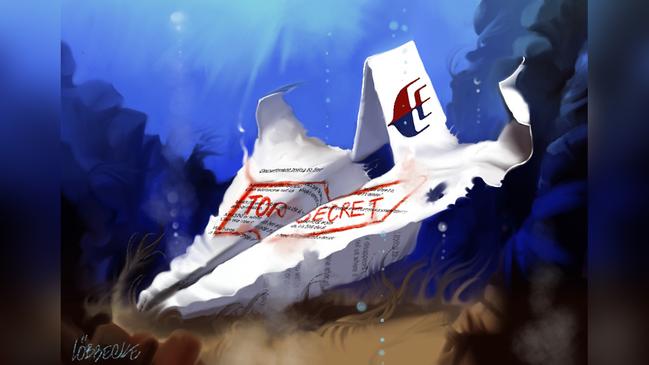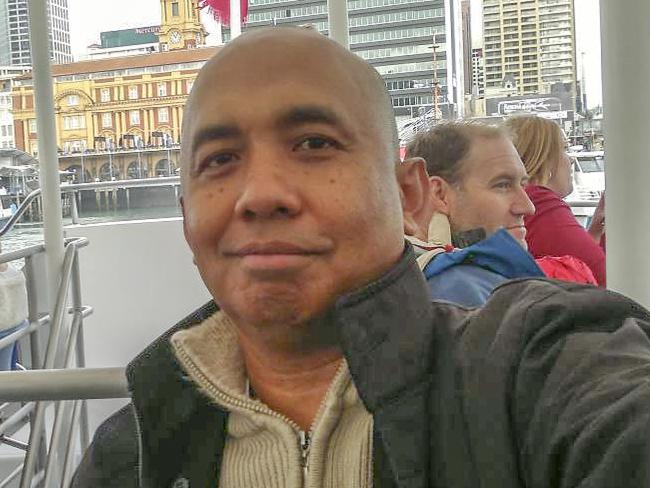
Five years ago today a massive wide-bodied modern jetliner flown as Malaysia Airlines Flight MH370 vanished into thin air. The Boeing 777 and 239 souls on board lie somewhere deep in the southern Indian Ocean, but their families don’t know where, and the aviation community doesn’t know why.
The next of kin remain tormented by the lack of closure, and no major lost passenger aircraft has been given up on.
This week, encouragingly, Malaysian Transport Minister Anthony Loke said his government was open to bids to launch a new hunt for MH370, and the Houston-based undersea survey company Ocean Infinity said it might be interested.
Malaysia put up about $100 million towards the first sea floor search led by the Australian Transport Safety Bureau, and was prepared to spend a similar amount for the second hunt led by Ocean Infinity if it found the plane.
MORE: MH370 myths dismantled
It’s now time for other parties to contribute, particularly China, whose nationals accounted for two-thirds of the passengers, and the giant Boeing Corporation, which manufactured the aircraft and recently announced sales of $US100 billion ($142bn).
There are new places to look: one would be wider either side around what’s known as the Seventh Arc along which MH370 is thought to have come down based on automatic electronic satellite “handshakes” between the aircraft and a ground station in Perth. The search could go farther north, or a bit farther south where some senior pilots believe the aircraft came down.
To give a new hunt the best chance of success, a few things need to happen.
The first, proposed by veteran Canadian air crash investigator Larry Vance, would be for UN body the International Civil Aviation Organisation to establish a new investigation into why MH370 disappeared, assembling an impeccable international panel of experts to review all the evidence and find more.
The original Malaysian-led investigation, while it pursued many angles and involved a huge body of work, had significant deficiencies including inadequate analysis of the pieces of the aircraft that washed up on and off the coast of Africa.
The Malaysian chief investigator, Kok Soo Chon, demonstrated apparent bias in his comments, saying the investigation had cleared the two pilots of any suspicion of deliberately taking MH370 to its end.

This runs counter to the widespread view in the aviation community that the evidence points most strongly to captain Zaharie Ahmad Shah having hijacked his own aircraft and cunningly made it disappear. Vance wrote a book with compelling analysis of the wreckage, which he believes proves MH370 was flown by a pilot to the end and ditched.
The ATSB based its search strategy on the alternative theory that at the end MH370 was a “ghost flight” with incapacitated pilots, and crashed down rapidly in an uncontrolled dive after running out of fuel on autopilot.
The second thing that should happen is more basic research. As pointed out by David Griffin, the CSIRO scientist who led the drift modelling to try to establish where MH370 came down based on when and where the pieces of wreckage showed up, that work was good but done fairly quickly. An international collaborative re-examination might yield new clues.
Similarly, the work done on the satellite data was fast and brilliant, but could be revisited.
Third, more detective work could be done on Zaharie — he was politically active in supporting the then opposition; he had a female friend who had recently broken off what she called a platonic friendship with the married captain.
The fourth requirement is that the huge amount of material gathered for the investigation into the loss of the aircraft should be released, to allow independent experts to examine it afresh.
The Malaysian government, while it has unveiled a great deal of its cache of knowledge, is not thought to have made public all the raw data from military radar that tracked MH370 for a period after it deviated 40 minutes into its planned flight from Kuala Lumpur to Beijing on March 8, 2014.
The ATSB has suppressed a much wider range of material.
It has rejected a series of Freedom of Information requests from The Australian seeking some of the most crucial material not made public, such as the opinions from a panel of international experts on the satellite data. The ATSB said other governments would object to it being released.
The ATSB also refused an FOI request on assessments of French analysis of a wing part of MH370 known as a flaperon that washed up on the French Indian Ocean territory of Reunion.
The French said the flaperon was “deflected”, suggesting it was lowered by a conscious pilot for a ditching, contradicting the ATSB’s ghost flight theory.
What possible reason, five years after MH370 disappeared and more than six months after the Malaysians brought down their safety investigation report, could justify the ATSB keeping this material from the families and the broader aviation community?
It’s a question being asked by next of kin and aviation experts. They wonder what the ATSB has to hide, and whether that material would show the bureau had information that MH370 was flown to the end by a rogue pilot, but discounted it because, possibly subconsciously, it did not want to embarrass Malaysia.
When a few months ago I approached the project director of the ATSB-led search, Perth-based Paul Kennedy from Dutch marine survey company Fugro, he said he was always happy to talk, but needed ATSB permission.
A few days later Kennedy said the ATSB had gagged him. Bureau spokesman Paul Sadler would not say why.
Successive federal transport ministers belonging to the Nationals seem to have tolerated such behaviour, but if Labor is elected and Anthony Albanese takes that portfolio, he should call in ATSB chief commissioner Greg Hood.
Albanese should remind Hood he heads a branch of the public service, and that we live in a democracy that values transparency and freedom of speech and the press.
He should ask Hood to release the material, not gag private sector experts from talking, and re-examine in an open and genuine fashion why his search failed.
Ean Higgins’s book The Hunt for MH370: The Mystery, the Cover-up, the Truth, is published by Pan Macmillan.





To join the conversation, please log in. Don't have an account? Register
Join the conversation, you are commenting as Logout